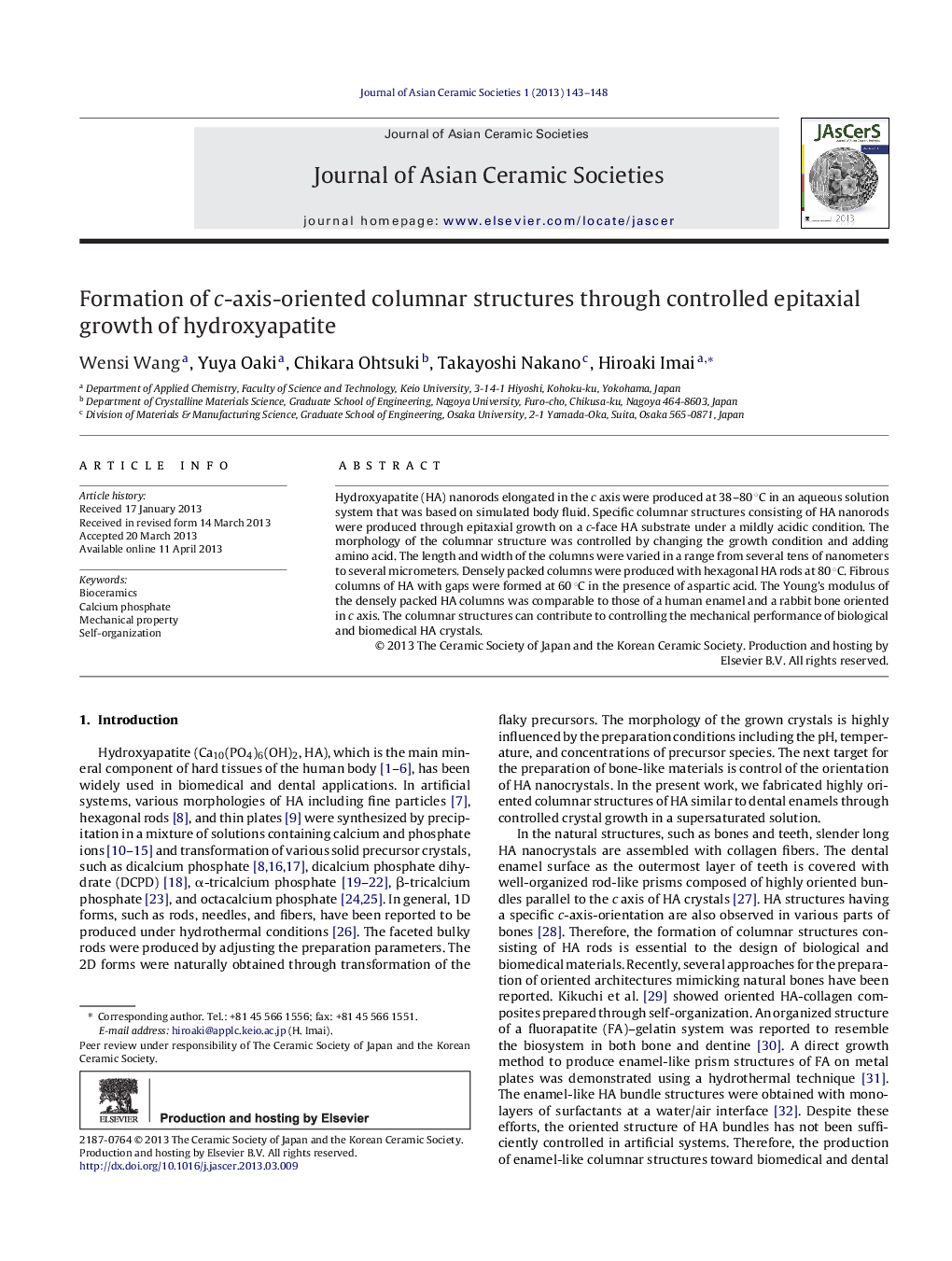| Article ID | Journal | Published Year | Pages | File Type |
|---|---|---|---|---|
| 1473430 | Journal of Asian Ceramic Societies | 2013 | 6 Pages |
Hydroxyapatite (HA) nanorods elongated in the c axis were produced at 38–80 °C in an aqueous solution system that was based on simulated body fluid. Specific columnar structures consisting of HA nanorods were produced through epitaxial growth on a c-face HA substrate under a mildly acidic condition. The morphology of the columnar structure was controlled by changing the growth condition and adding amino acid. The length and width of the columns were varied in a range from several tens of nanometers to several micrometers. Densely packed columns were produced with hexagonal HA rods at 80 °C. Fibrous columns of HA with gaps were formed at 60 °C in the presence of aspartic acid. The Young's modulus of the densely packed HA columns was comparable to those of a human enamel and a rabbit bone oriented in c axis. The columnar structures can contribute to controlling the mechanical performance of biological and biomedical HA crystals.
